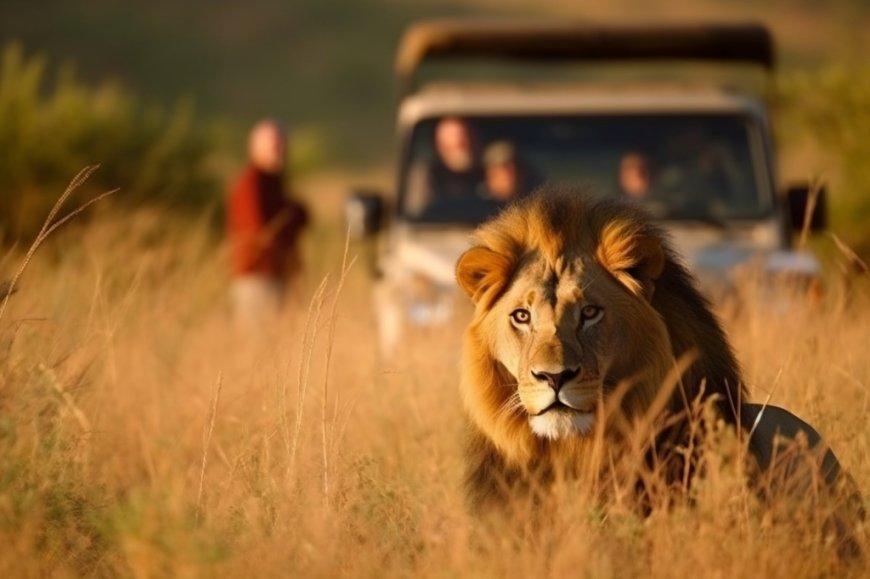World Wildlife Day 2025: A Global Call to Protect Nature
Explore the significance of World Wildlife Day 2025, this year’s theme, key threats to biodiversity, and how you can take action. Learn about global events and innovative conservation solutions.

Introduction: The Urgency of Wildlife Conservation
World Wildlife Day, observed annually on March 3rd, is a global event dedicated to raising awareness about wildlife conservation and biodiversity protection. Established by the United Nations in 2013, this day highlights the growing threats to nature and encourages collective action to safeguard the planet's ecosystems.
As human activities continue to disrupt wildlife habitats, World Wildlife Day 2025 serves as a critical reminder that conservation is not just about preserving animals—it is about protecting the delicate balance of life on Earth.
Theme of World Wildlife Day 2025
Each year, World Wildlife Day focuses on a particular theme to drive conservation efforts. The 2025 theme is expected to be "Innovative Solutions for Wildlife Conservation," encouraging new technologies, policies, and community-driven initiatives to protect wildlife.
With the rise of artificial intelligence, drone surveillance, and sustainable agriculture, conservationists and governments are exploring cutting-edge solutions to combat poaching, deforestation, and habitat destruction.
Organizations like the World Wildlife Fund (WWF) (WWF) and the International Union for Conservation of Nature (IUCN) (IUCN) are leading these efforts, advocating for policies that promote wildlife protection and sustainable resource management.
Why Wildlife Conservation Matters
Wildlife is essential for maintaining biodiversity, ecological stability, and even human survival. Here are some key reasons why conservation efforts are more important than ever:
- Biodiversity Preservation – A healthy ecosystem depends on a diverse range of species, each playing a unique role. The loss of even one species can have devastating ripple effects.
- Climate Regulation – Forests, oceans, and wetlands act as natural climate regulators, absorbing carbon dioxide and reducing global warming.
- Economic Value – Wildlife tourism generates billions of dollars in revenue worldwide, supporting local economies in countries like Kenya, Costa Rica, and Thailand.
- Medical Advancements – Many life-saving medicines are derived from plants and animals found in nature. Losing species means losing potential medical breakthroughs.
Major Threats Facing Wildlife in 2025
Despite conservation efforts, wildlife continues to be under threat from various human activities. Some of the most pressing challenges include:
Deforestation and Habitat Loss
Millions of acres of forests are destroyed annually to make way for agriculture, urbanization, and infrastructure projects. The Amazon Rainforest alone lost over 1.3 million hectares in 2023 (National Geographic).
Illegal Wildlife Trade
Poaching and illegal trafficking of wildlife continue to threaten species like elephants, rhinos, and pangolins. The illegal wildlife trade is valued at over $23 billion annually, making it one of the largest black markets in the world (Traffic).
Plastic Pollution and Ocean Degradation
Over 8 million tons of plastic waste enter the oceans each year, endangering marine life such as sea turtles, whales, and seabirds (Ocean Conservancy).
Climate Change and Extreme Weather
Rising global temperatures and unpredictable weather patterns are pushing many species to the brink of extinction. Coral reefs, polar bears, and amphibians are particularly vulnerable to these changes.
How You Can Make a Difference
World Wildlife Day 2025 is an opportunity for individuals, organizations, and governments to take meaningful action. Here are some ways to contribute:
Support Conservation Organizations
Donate to trusted wildlife organizations such as:
- The Nature Conservancy (Nature.org)
- Conservation International (Conservation.org)
- World Wildlife Fund (WWF)
Reduce Plastic and Waste
Minimize single-use plastics, participate in cleanup drives, and opt for biodegradable alternatives to reduce pollution.
Choose Sustainable Products
Support brands and companies that follow ethical and environmentally friendly practices. Look for certifications such as Rainforest Alliance, Fair Trade, and FSC-certified products.
Engage in Wildlife-Friendly Tourism
When traveling, choose eco-friendly lodges, support local conservation projects, and avoid attractions that exploit animals.
Raise Awareness and Advocate for Policy Changes
- Share information about World Wildlife Day on social media using #WorldWildlifeDay2025.
- Write to policymakers urging stronger environmental protections and wildlife laws.
- Educate others about the impact of human activities on nature.
Global Events for World Wildlife Day 2025
To mark the occasion, various organizations, governments, and institutions will host events and initiatives. Some key activities include:
- United Nations World Wildlife Day Conference – A virtual event where global leaders discuss conservation strategies.
- Wildlife Photography Contests – Platforms like National Geographic (NationalGeographic.com) will feature breathtaking wildlife photography competitions.
- Reforestation Campaigns – Tree-planting initiatives by environmental groups aiming to restore lost habitats.
- Educational Programs in Schools and Universities – Institutions worldwide will conduct workshops and awareness programs about wildlife protection.
Conclusion: A Collective Effort for a Sustainable Future
World Wildlife Day 2025 is more than just a symbolic celebration—it is a call to action. The responsibility to protect wildlife falls on individuals, communities, and policymakers alike.
By taking conscious steps—whether through reducing waste, supporting conservation efforts, or educating others—we can contribute to a more sustainable future for generations to come.
Nature’s survival is closely tied to our own. This March 3rd, let’s pledge to prioritize the well-being of our planet and all its inhabitants.
What's Your Reaction?
 Like
0
Like
0
 Dislike
0
Dislike
0
 Love
0
Love
0
 Funny
0
Funny
0
 Angry
0
Angry
0
 Sad
0
Sad
0
 Wow
0
Wow
0



















































